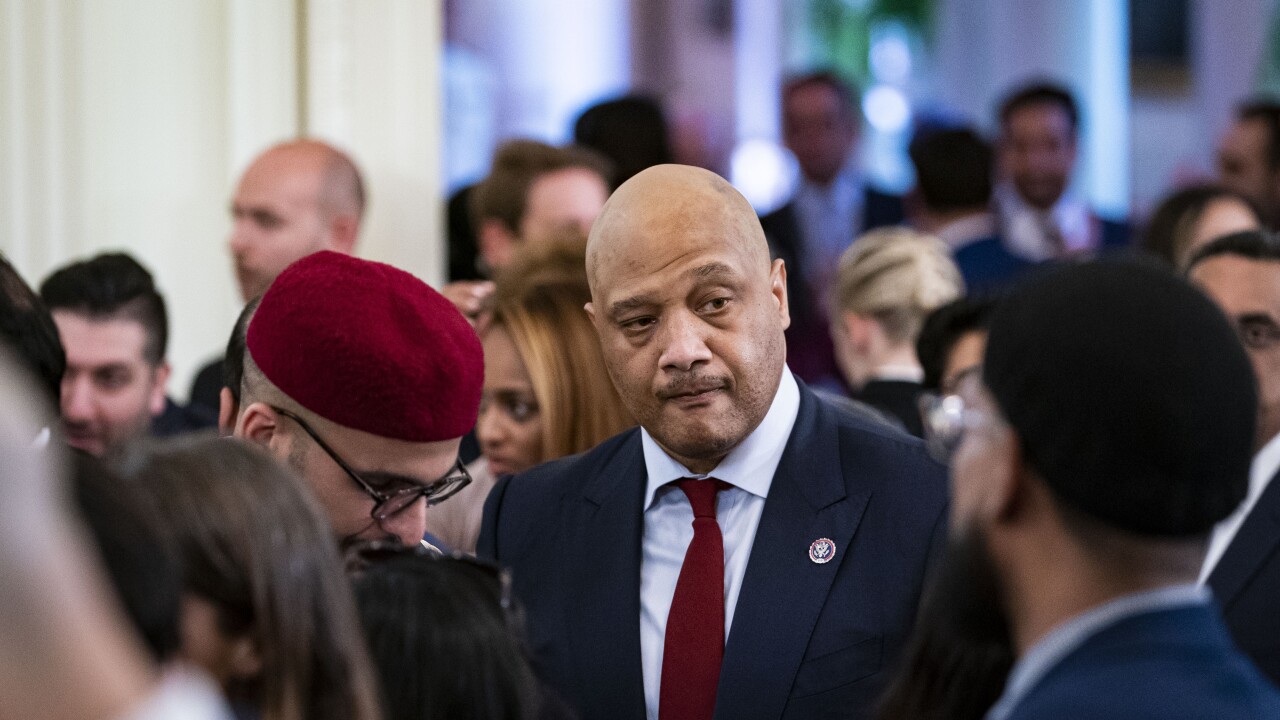The Puerto Rico Electric Power Authority's banks, owed less than 10% of the utility's debt, may hold the upper hand among creditors as the utility restructures its business with $8.43 billion of outstanding bonds at stake.
PREPA, operating under forbearance agreements since last year, owes four private banks about $550 million: $200 million to the Scotiabank de Puerto Rico subsidiary of Bank of Nova Scotia, $200 million to the Oriental Bank subsidiary of OFG Bancorp, $75 million to Banco Popular, and $75 million to First Bank Puerto Rico. In addition, a $146 million line of credit to PREPA from Citi was reportedly sold to Solus Alternative Asset Management.
The banks hold disproportionate power among creditors in forbearance with PREPA because their lines of credit have seniority over bonds and because they can act individually to upset negotiations by calling for repayment of any one of the lines.
"In the specific case of PREPA, its bank lines really became permanent funding and not a source of liquidity because they were continuously nearly fully drawn," said Dennis Pidherny, managing director at Fitch Ratings. "They took on an even greater importance when they became due, and PREPA had no means to repay the outstanding [balance]. Dealing with the existing bank lines is therefore a key component of any settlement or restructuring."
Until early May PREPA's creditors consisted of the bondholders, the Government Development Bank for Puerto Rico (a Puerto Rico government-owned bank), the four banks and Citi, which had extended a $146 million line of credit.
On May 7 Reuters reported the sale of Citi's line to Solus. Asked to confirm that report, a spokeswoman at Solus said, "We're not talking about that."
The August 2013 official statement for PREPA's most recent bond sale said that the bank lines were payable before the bonds. The August 2014 bondholder forbearance agreements referred to the "priority of repayments of the Citibank/Scotiabank lines of credit relative to the bonds," while allowing that the bondholders had the right to contest this priority.
The banks' interests have critical importance, according to an outside spokesman for forbearing bondholders' group, because any one of them could choose to end its forbearance to PREPA, ending the entire forbearance process.
In contrast, bondholders representing at least 60% of the par outstanding must continue to forbear for the process to continue. And membership in the bondholders' group can and has changed over time.
According to the terms of the August 2014 bank forbearance agreements, as soon as the forbearance ended, all of PREPA's bank debt would become due. Last August PREPA signed separate agreements with the GDB, Citi, the Puerto Rican banks, and, collectively, the bondholders and insurers.
The letters of credit are a major factor in Standard & Poor's CCC-minus rating and negative outlook rating on the bonds, said S&P director Jeff Panger.
In late April OFG Bancorp took a $24 million provision on its line of credit and its president, José Rafael Fernández, expressed frustration with PREPA, saying that he believed PREPA had the capacity to pay its creditors and that it was showing a "reluctance" to do so.
At the time an OFG spokesman said the bank preferred to work within the forbearance.
The banks' handling of PREPA may be driven not only by PREPA's behavior but by their own needs. Three of the four banks have ratings indicating they are in financial stress. Banco Popular is rated Ba1 with a negative outlook by Moody's Investors Service, B-plus on credit watch negative by S&P, and BB-minus by Fitch Ratings. First Bank Puerto Rico is rated Ba3 with a negative outlook by Moody's, B-plus on credit watch negative by S&P, and B-minus by Fitch. And OFG Bancorp is rated B-plus on negative credit watch by S&P and isn't rated by the other two agencies.
Scotiabank de Puerto Rico is part of the Bank of Nova Scotia, and benefits from the Canadian bank's strong ratings (Aa2 from Moody's, A-plus from S&P, and AA-minus from Fitch). All of the above ratings are long-term issuer credit ratings.
Despite the tight straits of the Puerto Rico banks, full repayment of the PREPA lines may not be crucial to their survival, according to Guggenheim Securities equities research analyst Taylor Brodarick. With $200 million due and weak ratings, OFG Bancorp would seem to be the most vulnerable. However, it took a $24 million provision that will soften the blow if the recovery plan includes reduction in debt repayment.
The banks share with the bondholders the power, if the forbearance were to end, to turn to the courts to seek a receiver for PREPA, the forbearing bondholder public relations representative said.
"Going forward we would expect that PREPA would seek to maintain bank facilities as a source of funding and liquidity post restructuring, since it is more economic than holding cash," Fitch's Pidherny said.
As things stand the creditors' forbearance to PREPA ends at the start of June 5. PREPA chief restructuring officer Lisa Donahue is scheduled on June 1 to submit a comprehensive recovery plan for PREPA that may include debt repayment plans.
If the banks and bondholders are satisfied with the recovery plan, they may continue to forbear beyond June 5.





